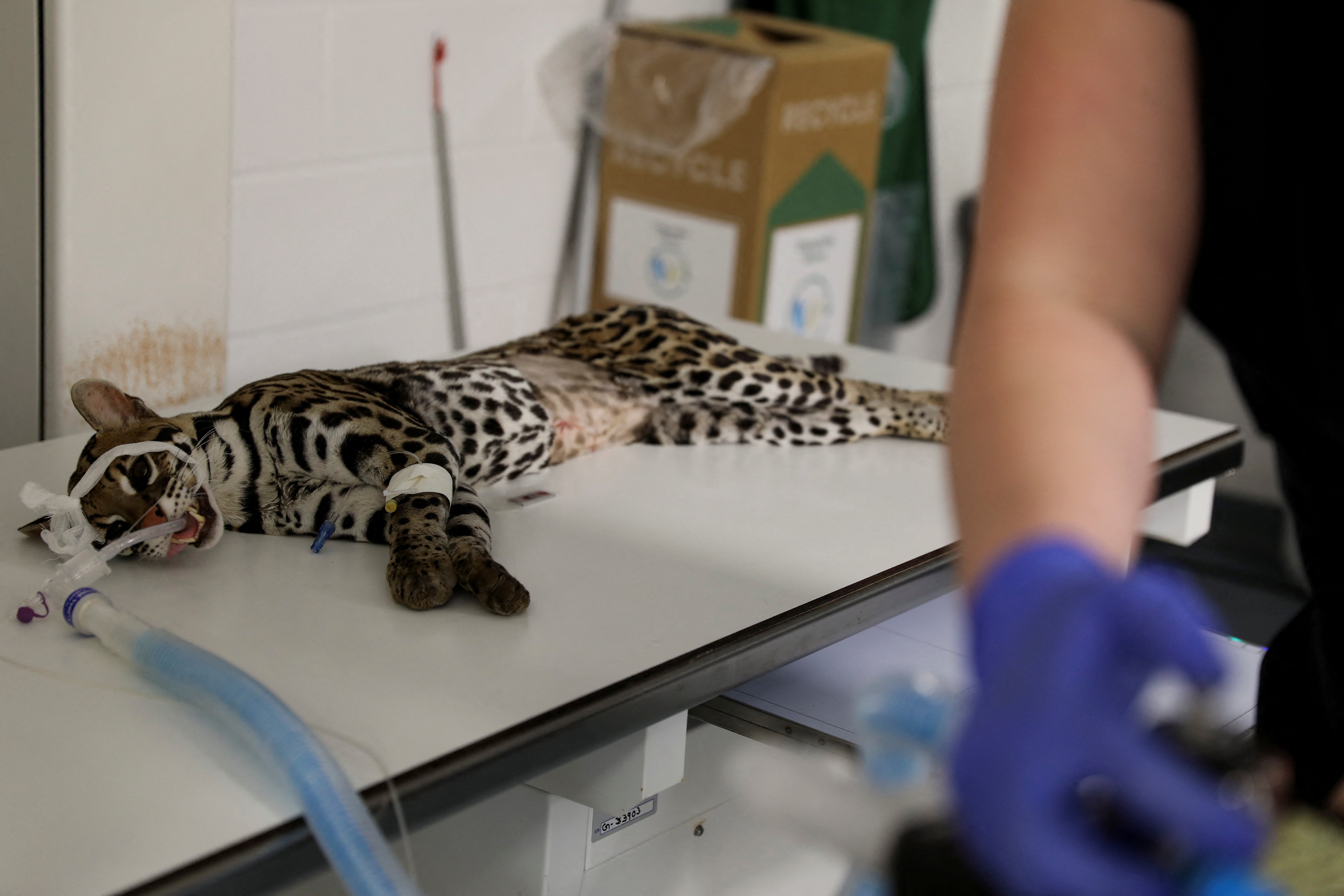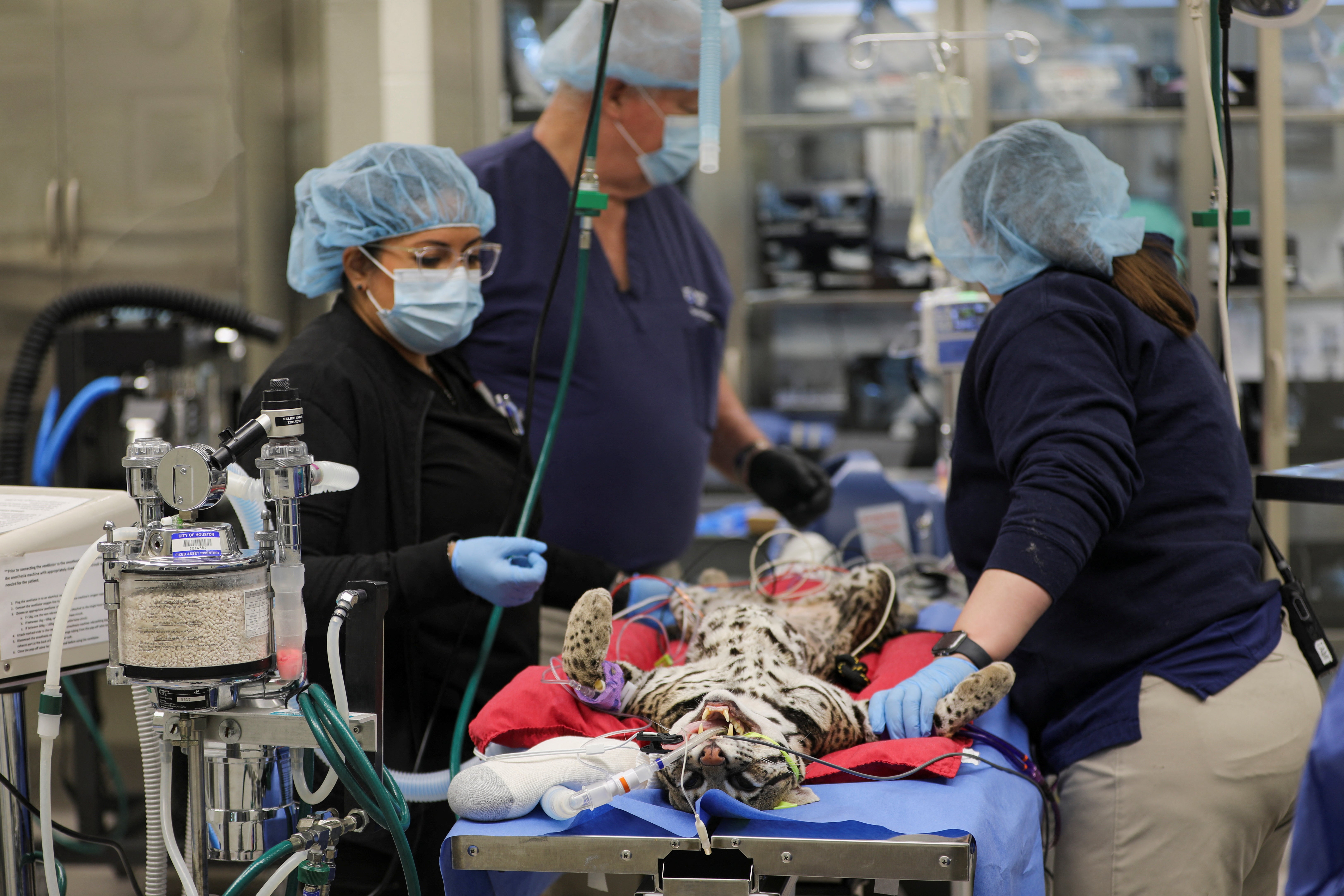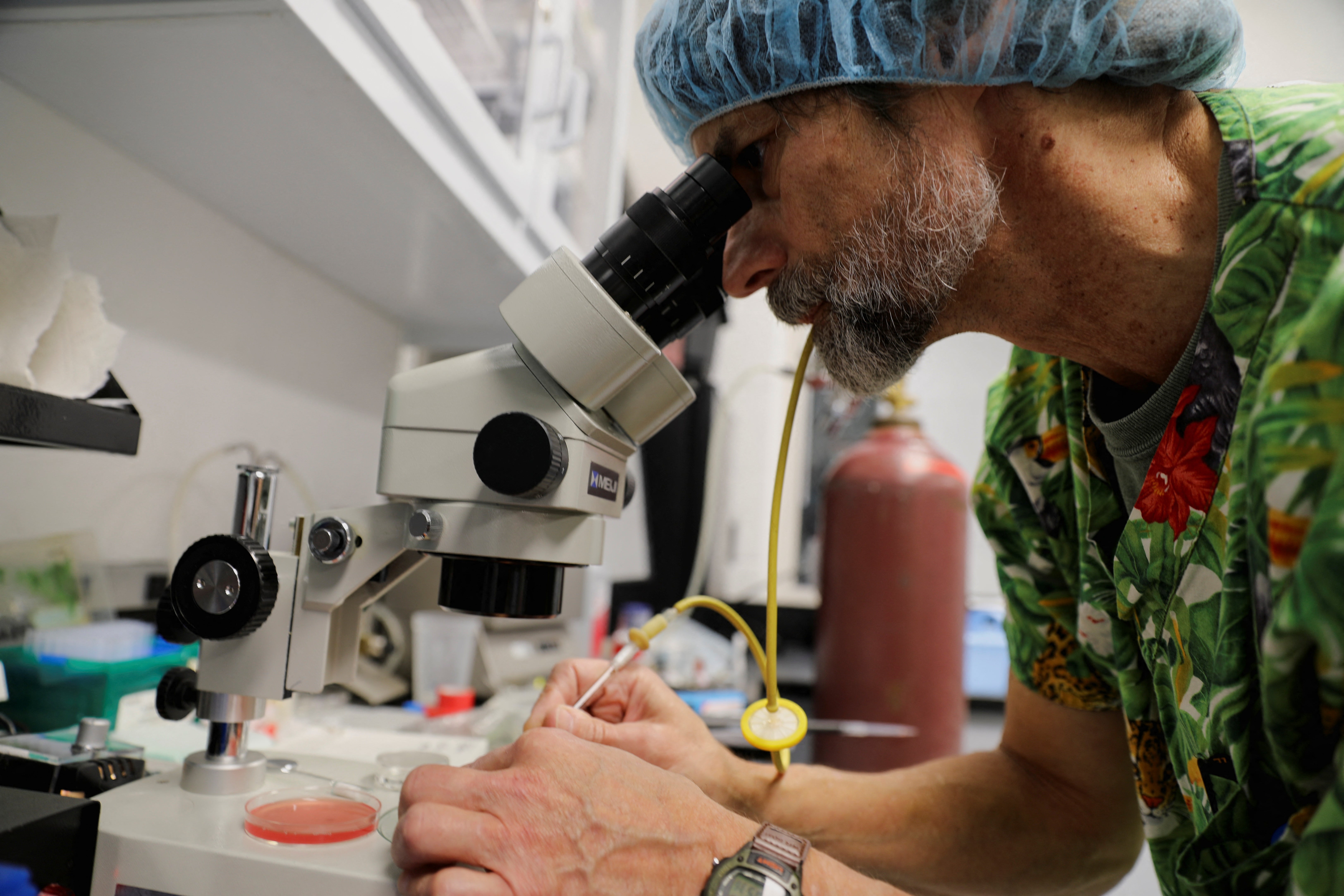Ocelots are nearly extinct in the US. These scientists are trying to save them
The wild cats are clinging to survival, with fewer than 100 left in the US
Scientists are racing against time to bolster the dwindling ocelot population in the United States, turning to innovative fertility treatments in a bid to save the endangered wild cat.
Once widespread across the American Southwest, ocelots are now reduced to fewer than 100 individuals, clinging to survival in two isolated breeding populations in South Texas.
While the species exists elsewhere, from Mexico down to South America, these Texan cats, with their distinctive spotted coats, represent the last known wild population in the US.
“Just look at the cat – why would you not want that animal to survive in nature?” asks Bill Swanson, director of animal research at the Cincinnati Zoo.
Swanson has been travelling across the country, working to breed captive ocelots in zoos using sperm collected from wild ocelots in South Texas.
He emphasizes the broader ecological importance of the project: “It's not just saving the ocelot, it's saving the habitat and the ecosystem where it lives, which supports so many other animals that provide those services that let people survive on this planet.”
The East Foundation, a San Antonio-based nonprofit, plays a crucial role in these conservation efforts. It manages one of the key breeding populations on a vast 200,000-acre expanse of South Texas ranch land.

This area provides critical thorn scrub habitat, a dense thicket of short, spiky shrubs favoured by the elusive, nocturnal ocelots.
Ashley Reeves, a research veterinarian with the East Foundation, points to human activity as a major factor in the decline of the ocelot, a species officially listed as endangered in the US since 1982.
"Back when the fur trade became very popular, they were hunted down for their beautiful fur," Reeves said.
"And then also loss of habitat, human encroachment, large cities being built and roadways, so roadways are one of their No. 1 killers today."
Reeves and Swanson have been working on their ocelot project since 2021. The team has tried, unsuccessfully so far, to breed ocelots two ways.

The first is via artificial insemination, in which semen collected from a cat is deposited directly into a female cat's reproductive tract.
The second is in vitro fertilization, in which oocytes, or eggs, are collected from the female cat's body and fertilized with semen in a petri dish before developing into an embryo in an incubator. The viable embryo is then surgically transferred into a cat or frozen to be transferred later.
Of the 13 artificial inseminations and four in vitro fertilization procedures performed in recent years, none have produced a viable pregnancy.
Swanson points to decreased quality in wild ocelot sperm due to signs of inbreeding, environmental stresses like dehydration from drought and decreased motility – the ability of sperm to move – from freezing specimens.
"An ocelot usually has one kitten. That's the normal litter size," Swanson said. "And in the wild, the mother will raise that kitten for a full year until it's old enough to go out on its own. So ocelots are very slowly reproducing animals naturally."
At the Texas State Aquarium in Corpus Christi, Texas, in December, the team extracted two eggs from a five-year-old ocelot named Milla and patiently waited to see if an embryo would form after combining the eggs with wild sperm in a petri dish.

After two days of waiting for a fertilized egg to cleave, or rapidly divide and develop into an embryo, the researchers were disappointed to find neither cell cleaved.
"It's disappointing," Reeves said.
"But at the same time, science doesn't always go the way you expect it to."
Researchers will spend the next few months trapping wild male ocelots to collect their sperm before resuming fertility procedures in the fall.
By the end of the year, a facility in Kingsville, Texas, will be constructed to house ocelots, provide medical and reproductive care as well as a setting for young ocelots to learn how to hunt in the wild.
Join our commenting forum
Join thought-provoking conversations, follow other Independent readers and see their replies
Comments